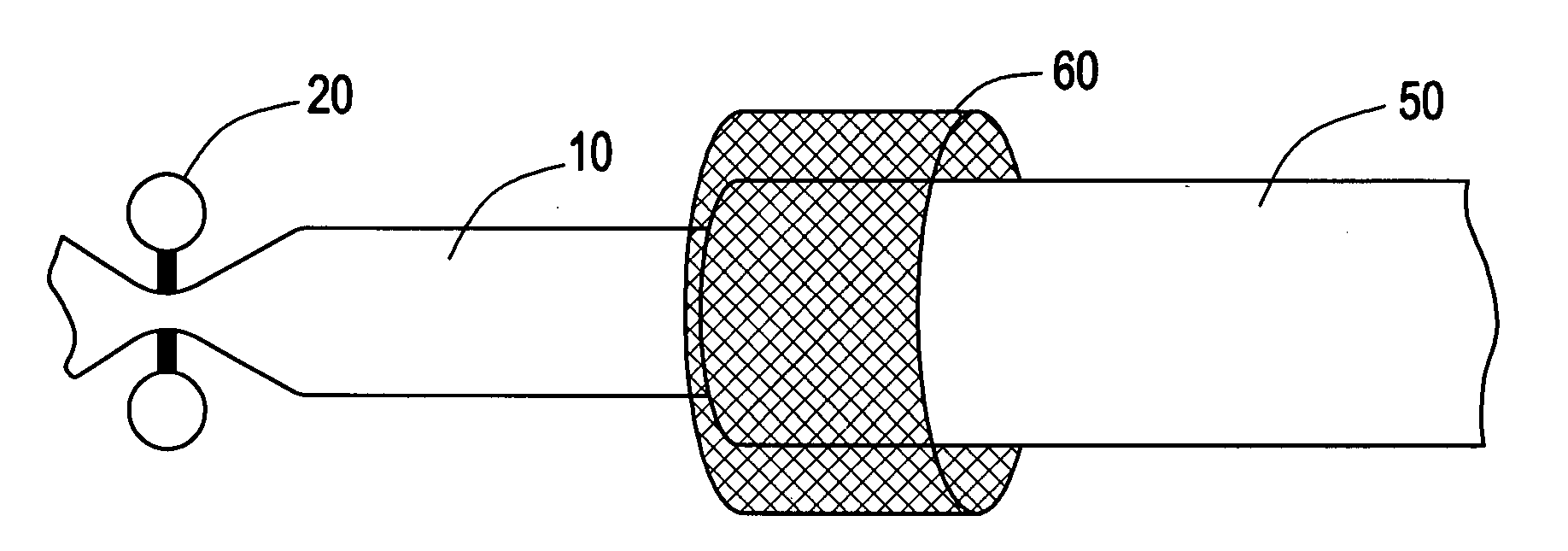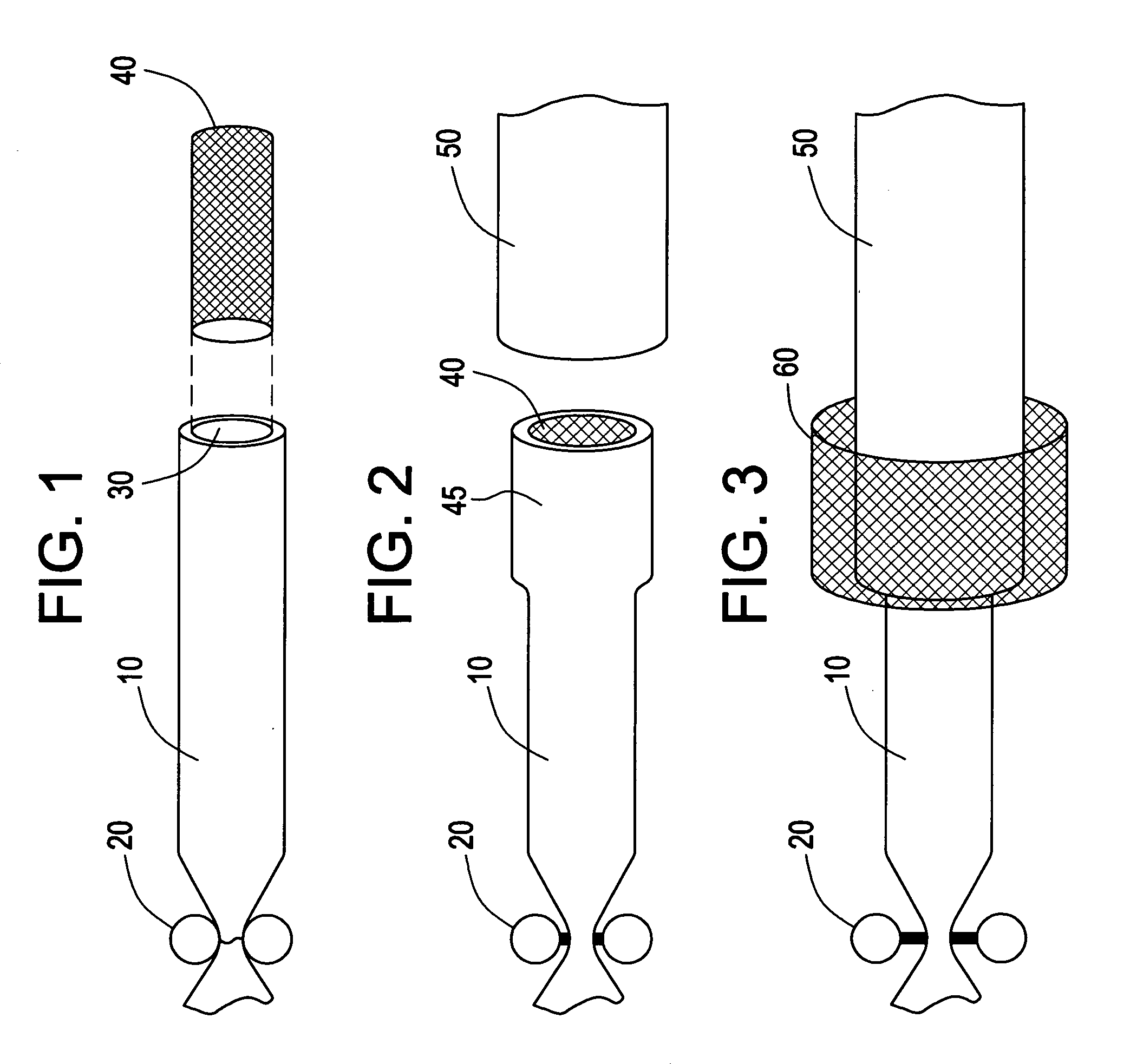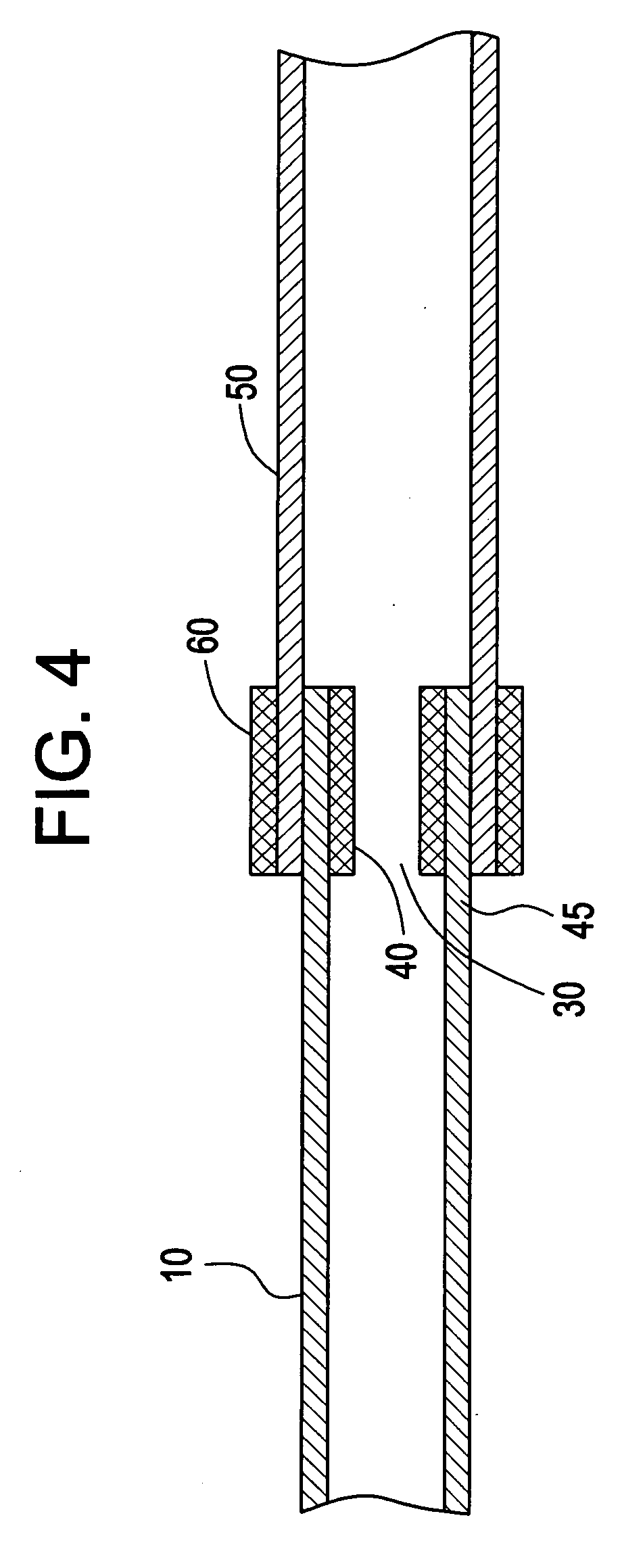Method and system of attaching vessels to grafts
a technology of graft and vessel, applied in the field of non-suture methods, can solve the problems of requiring substantial skill and experience, affecting the integrity of the graft, and affecting the graft, so as to prevent the axial movement of the graft and the vessel, facilitate the suturing process, and ensure the integrity. the effect of integrity
- Summary
- Abstract
- Description
- Claims
- Application Information
AI Technical Summary
Benefits of technology
Problems solved by technology
Method used
Image
Examples
Embodiment Construction
[0019]The present invention is based, in part, on the discovery that internal and external intra-luminal implants, such as stent-like structures, may be adapted to serve as supports and seals to facilitate sutureless coupling of two or more vessels. While the present invention will be described in connection with end-to-end anastamosis methods and devices for achieving Fem-Fem and Fem-Pop bypasses, one of ordinary skill in the art will readily appreciate that the present invention may be adapted for numerous uses in a variety of fields. For example, the present invention may be useful in any bypass procedure and may be useful in any environment where end to end or radially transected vessel are treated. Moreover, while the present invention will be described using expandable and retractable stents, the invention should be understood to incorporate any intra-luminal implant that is capable of serving as a support structure for a vessel into which it is to be inserted and any intra-lu...
PUM
 Login to View More
Login to View More Abstract
Description
Claims
Application Information
 Login to View More
Login to View More - R&D
- Intellectual Property
- Life Sciences
- Materials
- Tech Scout
- Unparalleled Data Quality
- Higher Quality Content
- 60% Fewer Hallucinations
Browse by: Latest US Patents, China's latest patents, Technical Efficacy Thesaurus, Application Domain, Technology Topic, Popular Technical Reports.
© 2025 PatSnap. All rights reserved.Legal|Privacy policy|Modern Slavery Act Transparency Statement|Sitemap|About US| Contact US: help@patsnap.com



